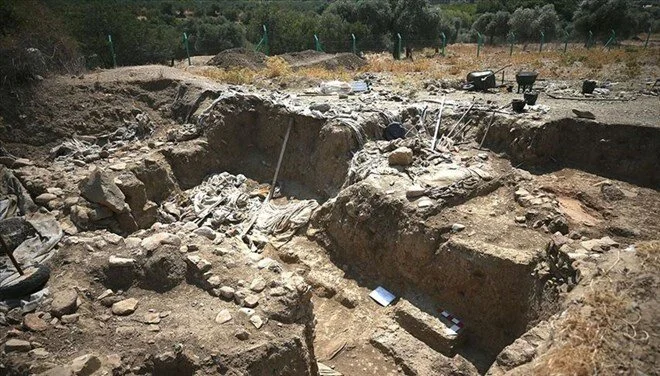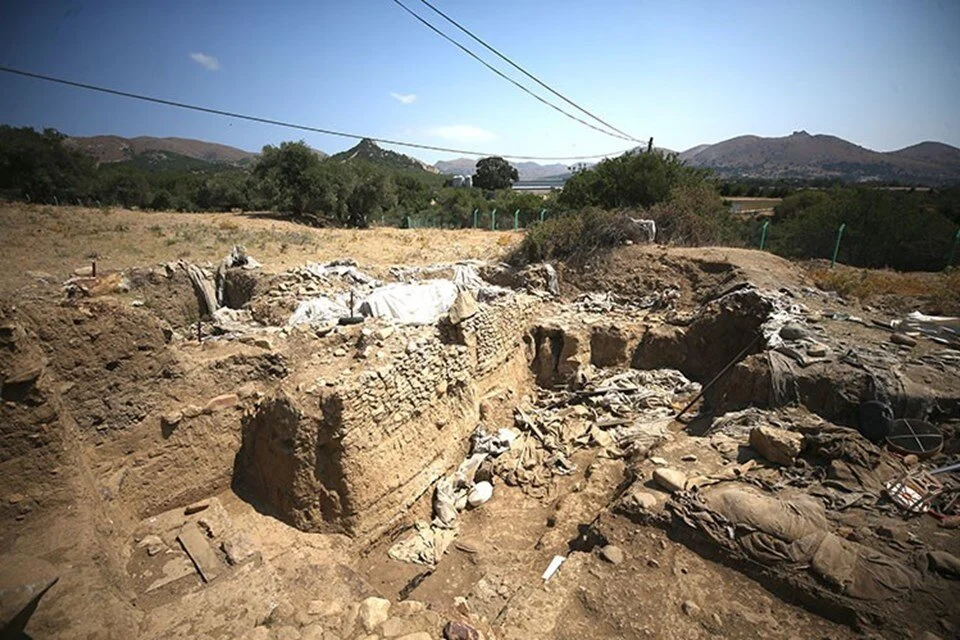Neolithic Twin of Knossos: 8,800-Year-Old Architecture Unearthed on Gökçeada
Archaeologists excavating the Uğurlu-Zeytinlik Mound on Turkey’s westernmost Aegean island, Gökçeada (ancient Imbros), have uncovered a groundbreaking discovery: the first known architectural remains of the earliest farming communities in the Aegean Islands.
Dating back roughly 8,800 years, the find places Uğurlu alongside Knossos on Crete as one of the two oldest known farming settlements in the Aegean world.
“A First in Aegean Prehistory”
Excavation director Prof. Dr. Burçin Erdoğu emphasized the importance of the discovery:
“This type of architecture has never been encountered before in the Aegean Islands. The building style is round in plan, with sunken floors and reed-based wattle-and-daub construction. Alongside Knossos on Crete, Uğurlu is the only settlement of the earliest farming communities in the Aegean. For the first time, we now have the actual architecture of these pioneering island farmers.”
This revelation makes Uğurlu not only significant for Turkey but for the entire history of the Aegean basin.
Archaeologists have uncovered five prehistoric buildings dating back 8,800 years at the Uğurlu-Zeytinlik Mound on Gökçeada (Imbros), Türkiye’s westernmost island in the Aegean Sea. Credit: AA
Homes of the First Island Farmers
In the most recent excavation season, archaeologists uncovered five houses dated to around 6800 BCE. These circular, partially sunken structures, built with wattle-and-daub walls, represent the earliest farming architecture ever identified on an Aegean island.
Until now, no physical evidence existed to show how the first Aegean farmers built their homes or organized their settlements. Uğurlu has changed that—providing the first tangible footprint of island farming communities and transforming speculation into reality.
Why Architecture Matters
While farming and herding had already been documented through botanical and animal remains, architecture provides the clearest sign of permanent settlement. The houses at Uğurlu prove that these early farmers were not seasonal visitors but long-term settlers who reshaped the island landscape with enduring homes.
Farming, Herding, and Exchange
Finds from the site reveal a thriving early community. Domesticated crops—wheat, barley, and peas—were brought from Anatolia. Animal bones show the herding of sheep, goats, cattle, and pigs.
Artifacts also reveal wide-ranging connections: obsidian from Melos and flint from Anatolia and the Balkans demonstrate that Uğurlu was part of a vast exchange network nearly 9,000 years ago. Far from being isolated, the settlement was a crossroads of trade and innovation in the Neolithic Aegean.
A Twin to Knossos
For decades, Knossos stood alone as the earliest known farming settlement in the Aegean. Now, Uğurlu provides a second site of equal age and importance, proving that the earliest island farmers were active not only in Crete but also in the northern Aegean.
This positions Uğurlu-Zeytinlik as a twin foundation of Aegean Neolithic culture, bridging Anatolia with the islands and rewriting how farming spread across the sea.
Rewriting Aegean Prehistory
The discovery of Uğurlu’s architecture challenges long-held assumptions and broadens the map of Neolithic life in the Aegean. It shows that permanent settlement and architectural innovation were already present in the northern Aegean nearly 9,000 years ago—well before many scholars had assumed.
As excavations continue, Uğurlu promises to reveal even more about how farming, architecture, and social life spread across the islands, cementing its role as one of the most important archaeological sites in the region.
Conclusion
The Uğurlu-Zeytinlik Mound on Gökçeada has delivered a discovery of extraordinary importance: the first farming architecture ever identified in the Aegean Islands. Its round, sunken, reed-woven houses bring to life the daily world of the earliest island farmers.
Standing shoulder to shoulder with Knossos, Uğurlu not only rewrites the opening chapter of Aegean prehistory—it secures Gökçeada’s place at the heart of humanity’s earliest farming story.








